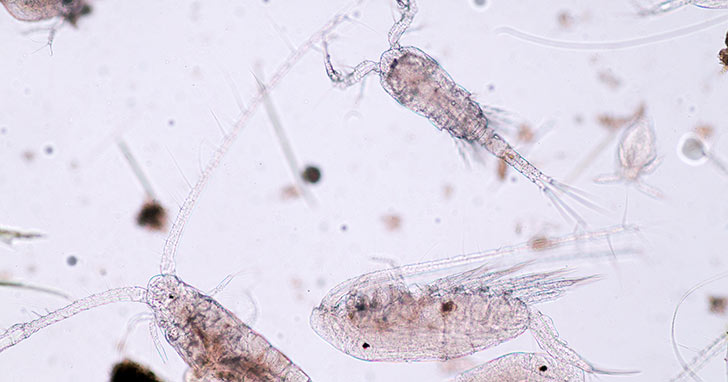
Culture Your Own Copepods at HomeWhat are Copepods?
Copepods can be grown outside of the aquarium system in a culture vessel, then harvested to feed the aquarium. Pod culture can be tricky. Some techniques are easier than others. However, with some simple equipment and a little dedication, pod cultures are achievable. How Do You Make a Culturing Container?
A clear Rubbermaid® plastic jar with a small hole drilled in the lid works great, though any type of container will suffice. Use an air pump and rigid air tubing attached to a gang valve to adjust air flow to a gentle 1 bubble per 3 seconds. Mix fresh/clean saltwater and add that to your container, get the air going, and adjust it to the proper flow rates. What do Copepods Eat?
Pelagic copepods such as the Tangerine, Acartia, and Pseudodiaptomus eat phytoplankton (free-swimming phytoplankton). As a general rule, the brown microalgae (T. Isochrysis galbana) are better than the greens (nannochloropsis). Add the algae (PhycoPure™ Copepod Blend) by the capful until your water turns a light tea color. Let it mix for a few seconds, then add the copepods. Remember, it is better to feed frequent small amounts than one large amount. If your pod population is sparse, the algae won't clear as rapidly, but as the pod population grows, algae will clear very quickly. Harpacticoids such as Tisbe eat detritus, phytoplankton, fish food, and fecal matter. While some species of harpacticoid are carnivorous and will eat other types of copepods, ReefPod™ Tisbe are not, making them perfect for the reef. What is the best salinity for Copepods?
Most copepods handle salinities from 25-35ppt (1.018-1.025+). What are the ideal temperatures for Copepods?
There are warm- and cold-water copepods. Tigriopus is a cold-water copepod; Tisbe is a warm water-tropical species. The Tisbe copepod (harpacticoid) will do very well at temperatures ranging from 71.6-80.6F°. How do you change water for Copepods?
Change water completely once a week for best results. Collect the entire culture with a 55-micron fine mesh screen and place the screen in a separate water-filled container to prevent the copepods from drying out. Clean the container by wiping it with a paper towel and rinsing with water. Refill the container with new saltwater, add algae, then add your pod culture. How do you harvest Copepods?
When you reach a density greater than 1/mL, begin harvesting. While you can keep cultures at greater densities, they will not perform as well if you do. Harvesting can be as simple as scooping the pods out of your container with a cup and adding them directly to your reef tank. Refill what you have taken out with fresh saltwater and algae/phytoplankton if necessary. How do you deal with Copepods and contamination?
Keep an eye out for ciliates, rotifers, and other organisms. If you find you're growing a contaminated population, you may need to start over. Why? Because these contaminants will compete for available food and eventually overrun the copepods. Related Articles
|
|
|




